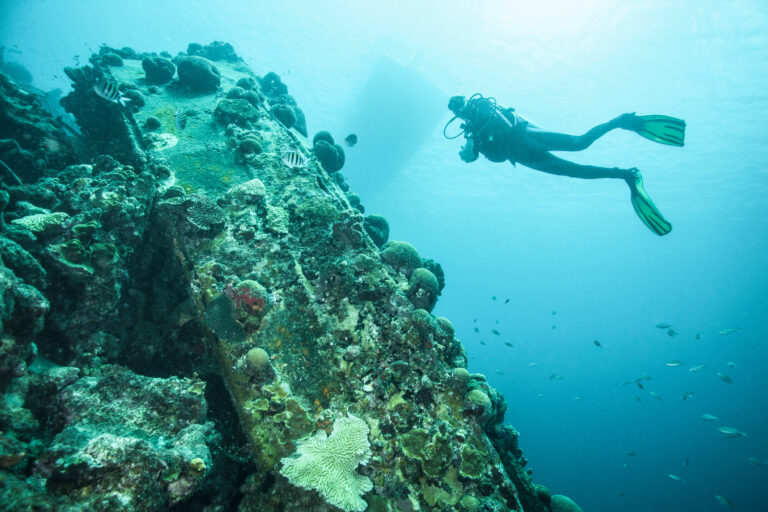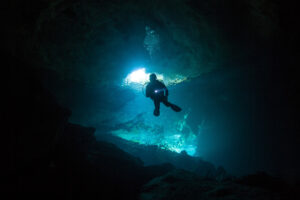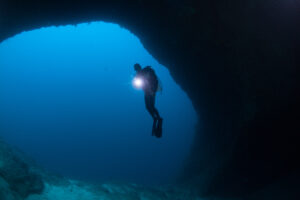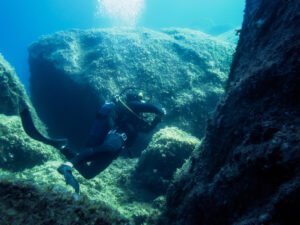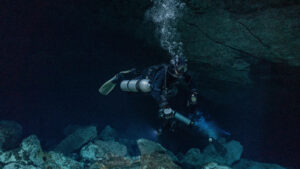What function does Helium have in Scuba Diving?
Helium, a chemically inert and second lightest element in the universe, plays a significant role in the world of scuba diving, particularly in deep diving. Its unique properties provide divers with a safer breathing gas mixture that reduces the risk of nitrogen narcosis and decompression sickness. This entry explores the history, benefits, and applications of helium in scuba diving.
History
Helium was first discovered in 1868 by French astronomer Pierre Janssen during a solar eclipse. It wasn’t until 1895 that Scottish chemist Sir William Ramsay isolated the gas on Earth. The gas was initially used for lighter-than-air applications, such as balloons and airships. It was not until the early 20th century that the potential of helium as a breathing gas was recognized.
Dr. Edgar End and Max Nohl first demonstrated the use of helium-oxygen mixtures for deep diving in 1937. In their experiment, they conducted a simulated dive to a depth of 420 feet (128 meters) using a recompression chamber. This successful test paved the way for helium’s adoption as an essential component in deep diving gas mixtures.
Benefits of Helium in Scuba Diving
Reduced Nitrogen Narcosis
Nitrogen narcosis is a condition that affects divers breathing compressed air at depths greater than 100 feet (30 meters). The increased partial pressure of nitrogen causes a narcotic effect, leading to impaired judgment, loss of motor control, and in severe cases, unconsciousness. By replacing a portion of nitrogen with helium, the risk of nitrogen narcosis is significantly reduced. Helium’s low solubility in body tissues minimizes its narcotic effects, allowing divers to maintain mental clarity and coordination at greater depths.
Decreased Decompression Sickness
Decompression sickness, or “the bends,” occurs when nitrogen bubbles form in a diver’s tissues due to rapid ascent or insufficient decompression stops. The use of helium in breathing gas mixtures reduces the amount of nitrogen absorbed by the body, resulting in a lower risk of decompression sickness.
Enhanced Thermal Conductivity
Helium’s high thermal conductivity means that it can help dissipate heat more effectively than other gases, such as nitrogen. This property is especially beneficial for divers using closed-circuit rebreathers, where the removal of heat generated by the scrubbing process is essential for maintaining a comfortable breathing temperature.
Applications of Helium in Scuba Diving
Trimix
Trimix is a breathing gas mixture composed of oxygen, helium, and nitrogen. It is commonly used by technical divers for deep diving and offers several advantages over air or nitrox, such as reduced narcotic effects and lower risk of decompression sickness. The helium content in trimix can be adjusted based on the desired depth and dive profile, allowing for optimal performance and safety.
Heliox
Heliox is a gas mixture consisting of helium and oxygen, with no nitrogen component. It was initially developed for commercial and military diving applications, where the risk of nitrogen narcosis and decompression sickness needed to be minimized. Due to its higher cost and the complexities of managing oxygen toxicity, heliox is generally reserved for extreme deep diving or specialized research projects.
Helitrox
Helitrox is a variant of trimix that incorporates a small amount of nitrogen along with helium and oxygen. This mixture is designed to provide the benefits of helium while reducing its costs and logistical challenges. Helitrox is often used by technical divers as a transitional gas between nitrox and trimix for dives in the intermediate depth range.
Considerations for Diving with Helium
Cost
Helium is significantly more expensive than compressed air or nitrox, making its use in scuba diving a more costly endeavor. As a result, divers often reserve helium-based gas mixtures for more demanding dives or specific technical diving applications.
Gas Management
Diving with helium requires additional planning and consideration of gas management. Divers must carefully calculate their gas consumption and ensure they carry sufficient gas for the planned dive, including decompression obligations.
Specialized Equipment
Diving with helium mixtures often necessitates the use of specialized equipment, such as high-pressure cylinders and regulators designed to handle the unique properties of helium. Additionally, closed-circuit rebreathers need to be compatible with helium for optimal performance and safety.
Training
Diving with helium requires additional training and certification due to the increased risks and complexities associated with deep diving and gas management. Technical diving courses and certifications, such as TDI’s Advanced Nitrox and Trimix courses, provide the knowledge and skills necessary for divers to use helium safely and effectively.
Physiological Considerations
Although helium reduces the risk of nitrogen narcosis and decompression sickness, it does not eliminate the need for proper ascent rates and decompression stops. Divers must still follow conservative dive profiles and adhere to established decompression procedures to minimize the risk of injury. Additionally, helium can cause a high-pitched distortion of the voice, known as the “helium squeak,” which can complicate communication during a dive.
Environmental Impact
Helium is a finite, non-renewable resource extracted from natural gas deposits. As the demand for helium increases in various industries, concerns about its depletion and environmental impact have been raised. Divers and dive operators should strive to use helium responsibly and efficiently to minimize waste.
Key Takeaways
Helium has revolutionized deep diving by providing a safer, more effective breathing gas mixture for divers. Its unique properties reduce the risk of nitrogen narcosis and decompression sickness while maintaining mental clarity and coordination at greater depths. However, diving with helium requires specialized training, equipment, and planning. As responsible stewards of the underwater environment, divers should use helium judiciously and continue to explore new techniques and technologies that enhance both safety and sustainability in scuba diving.

